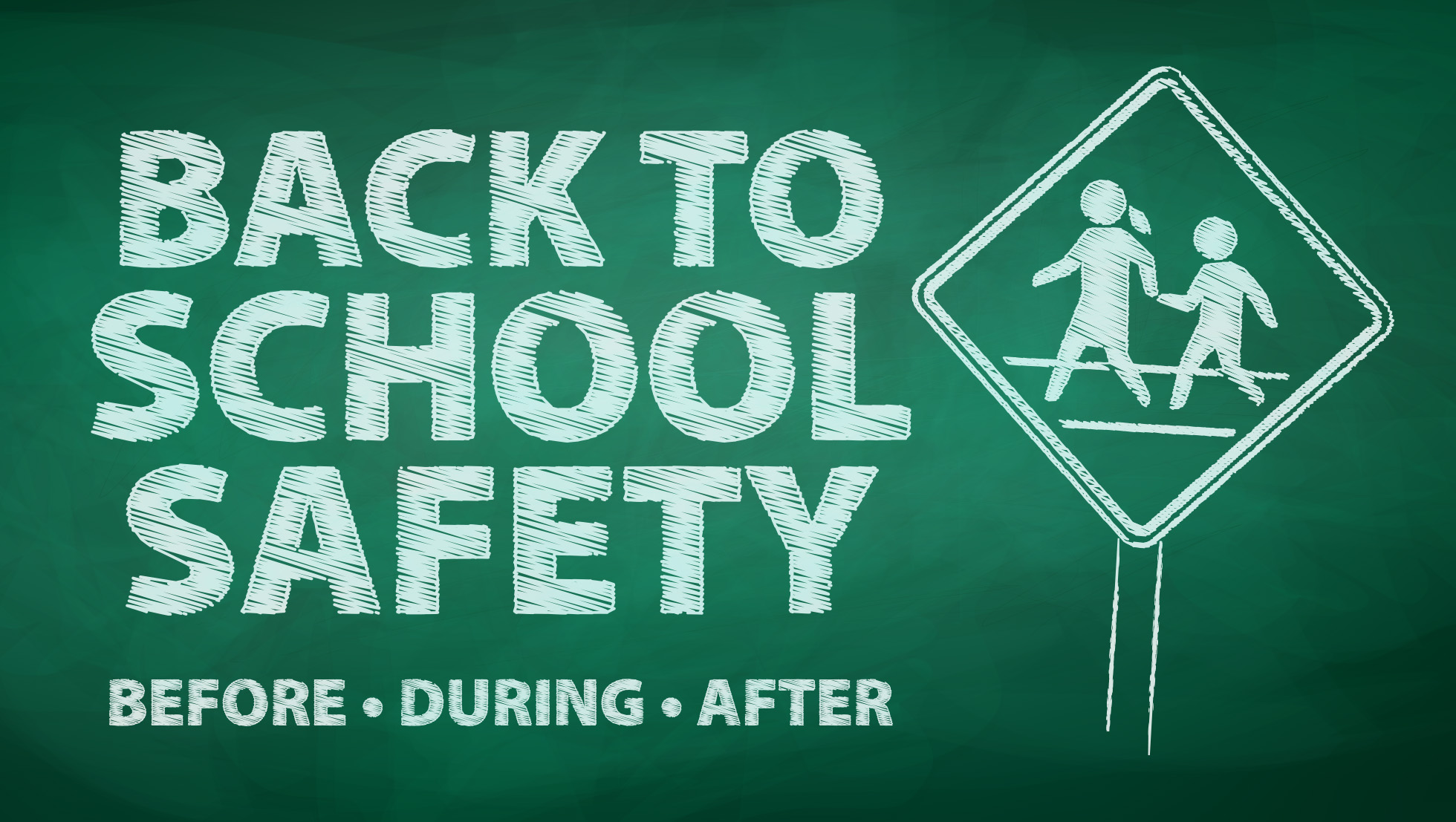Here are some back-to-school tips:
-
Be familiar with school zones. Get in the habit of noticing where school zones and crosswalks are on routes that you normally take. Accidents, including pedestrian accidents, are far more likely to occur locally on routes with which drivers are more familiar and comfortable.
-
Stop for school bus lights. Always stop for school buses with flashing red lights. Drivers approaching the bus must come to a full stop for the duration that the red lights are on. Some school buses have flashing yellow lights also, which means that drivers may proceed with extreme caution. Bus drivers often engage the flashing yellow lights before the flashing red lights, signaling that they are about to stop.
-
Obey crossing guards. School crossing guards are given police training and the same authority as local traffic police in most areas, so disobeying a crossing guard could get you in some serious trouble. Remember that driving on major streets where crossing guards and crosswalks are observed is safer than taking "short-cut" side streets where children may be unattended.
-
Anticipate the worst. The speed and distance away of oncoming cars is more difficult for young children to judge. Always anticipate the chance that a small child may run in front of you by slowing down and preparing to brake.
-
Be careful around parked vehicles. Be especially careful in areas with parked vehicles on the side of the road. Children waiting to cross may be especially difficult to see behind parked sport-utility vehicles.
-
Turn your headlights on. Drive with headlights on in areas with children and pedestrians. The AAA says that the use of headlights can reduce pedestrian accidents by about 25 percent.
-
Avoid using cell phones when driving. Cell phones are a known distraction. Never use hand-held cell phones while driving, and never use hands-free cell phones while driving in school zones or areas with children. The same goes for activities that distract the driver, such as changing CDs, looking at notes and reading maps.
-
Avoid reversing. Try to avoid reversing your vehicle in areas with children. It is more difficult to see short children and attend to your car's blind spots while reversing.
-
Don't speed. Remember that the speed limit in most school zones during school times or when children are present is 25 miles per hour. Bad weather, or areas with limited visibility, will require a lower speed. Your visibility to pedestrians, your ability to see them and your stopping distance all may be greatly impaired by weather or road conditions so follow common sense and slow down.
-
Don't honk at pedestrians or bicyclists. Honking at a child, whether on foot or on a bicycle, is generally not a good idea. The noise could possibly cause the startled child to trip or fall and be in a dangerous position for other approaching traffic.
School Buses and Laws:
Even if you do not have kids in school, it is not hard to see the increase in school buses around this time. Laws vary by state, but usually you must stop if a school bus is loading or unloading—no matter what side of the street it is on. Passing a school bus while its red lights are flashing is illegal in every state. Watch for school buses stopping at railroad tracks. Make sure to familiarize yourself with the local laws regarding school buses. In their guide, "Reducing Illegal Passing of School Buses," the National Highway Traffic Safety Administration (NHTSA) reports that many school buses are illegally passed about once a day. Some buses are even passed on the right (the side children use).
Measuring Tire Tread Depth
Tread depths need to be checked and recorded because the DOT has a legal limit - 4/32” for steer tires and 2/32” of rubber for drive and trailer tires. That means that if any spot in the major grooves of a steer tire is found to be 4/32” or less, that tire must be removed from service. However, it can either be retreaded or moved to the trailer and run down to 2/32" minimum before entering the retreading process. Drive tires would be required to be removed from service or retreaded when any major groove reaches 2/32” of rubber to be safe. Most fleets have found over the years that running the tire down to 2/32” will reduce the number of tire casings that are acceptable for retreading because with so little rubber to protect the casing, cuts, punctures, and stone drilling down to the steel belts becomes a problem. To protect your fleet’s tire investment, it is better to remove the tire in the 6/32” – 8/32” range to maximize your retreadability. The last tip about measuring tread depth: never measure in the decoupling groove which is found in many steer tire designs to reduce irregular wear. This outside decoupling groove is sometimes known as a PDG groove (Pressure Distribution Groove) and they may be very deep or may be very shallow–but it is not the same depth as the major tire grooves.









